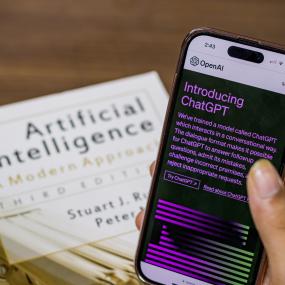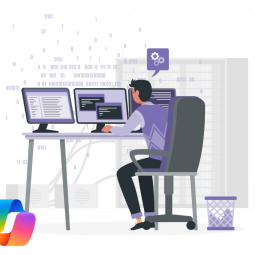Introduction to ChatGPT and other 'Large Language Models (LLMs)'
Artificial Intelligence holds great opportunity for not-for-profits looking to amplify their impact.
LLMs (like ChatGPT) can answer questions and assist you with tasks such as composing emails, content and code or researching topics and issues. While ChatGPT is the most widely known, other LLMs like Gemini, developed by Google, or CoPilot, developed by Microsoft (along with numerous others like Llama, Alpaca, Jasper etc) are also available and easy to use.
* Note that ChatGPT is just one brand of LLM that we have specifically named for those readers unfamiliar with the technical terms. Generative AI is another term that is used to describe these tools. Generative AI refers to models that are capable of generating text, images or other types of media by learning from patterns via training data, and creating new data of similar characteristics.
How can LLMs like ChatGPT work for NFPs?
LLMs can be a valuable tool for not-for-profit organisations' marketing efforts in various ways. Here are some ways you could use it:
- Content creation: Generate engaging content for your organisation's blog posts, social media updates, newsletters, and website. It can help you come up with fresh ideas, draft articles, and create attention-grabbing headlines.
- Social media management: Schedule and manage your social media posts, respond to comments and messages, and engage with your audience in a personalised and timely manner using an LLM.
- Email marketing: Create email templates, drafting newsletters, and crafting personalised email responses for different segments of your subscriber list.
- Fundraising campaigns: Create persuasive copy and storytelling for your fundraising campaigns. It can also assist in designing campaign landing pages and donation forms.
- Audience research: Analyse data and provide insights on your target audience, helping you understand their preferences, interests and behaviour better.
- Search engine optimisation: Optimise your website content for search engines, ensuring that your organisation's website ranks higher in search results, increasing visibility.
- Answering queries: Integrate an LLM into your website or social media platforms to respond to frequently asked questions, providing instant support to your audience.
- Translations: If your NFP operates in multiple languages, an LLM can help with translations and localisation of content to reach a broader audience.
- Grant proposals: Draft grant proposals by providing key points, relevant data, and coherent explanations of your NFP’s mission and impact.
- Campaign analysis: Analyse marketing campaign performance, providing insights into which strategies are most effective and which areas need improvement.
Things to consider when using LLMs
According to Peter Relan, a Silicon Valley AI expert, about 20% of the content that LLMs produce is likely to be wrong – otherwise known as ‘hallucinations’. It’s important to always check the content it produces, particularly because it is written in such a confident style, it’s easy for people to simply accept the output as correct.
The other concern raised about LLMs is the presence of bias in their outputs. Gender and religion stereotypes have been found in the answers produced by some LLMs, leading commentators to warn users to monitor for bias.
Remember that while LLMs can be powerful tools, they should be used as a support system and not a replacement for human content creation. Always ensure that the content generated by the LLM aligns with your NFP's values and is reviewed by a human before being published or used for important communications.
Join our webinars to learn how to utilise LLMs
We have a number of insightful webinars from leading AI experts designed to help not-for-profits accelerate their impact. You can find webinars here including:
- AI 101: Empowering NFPs for the digital era
- AI opportunities, risks and benefits for NFPs
- Generative AI for NFPs
- Leveraging Microsoft's generative AI tools
- Using AI to create content





Status message
Thanks for rating this guide.